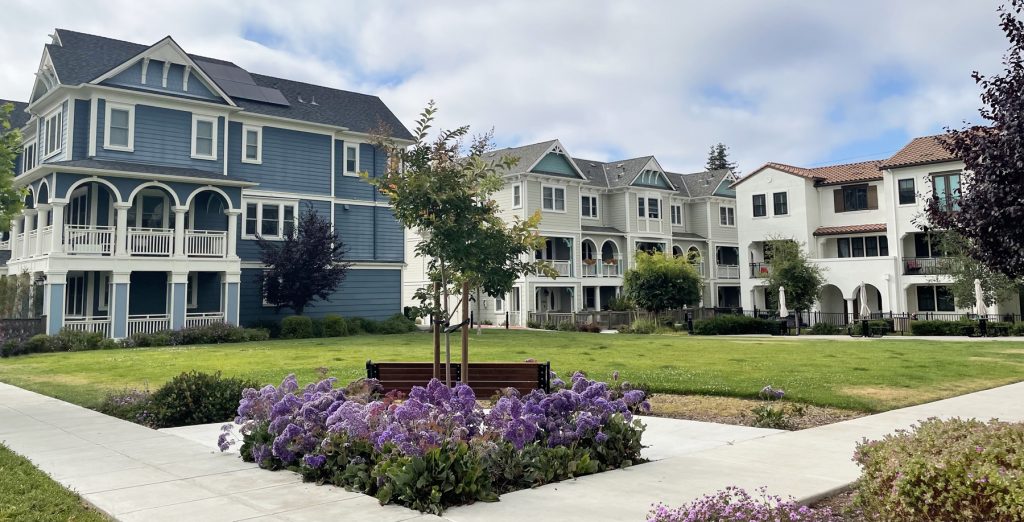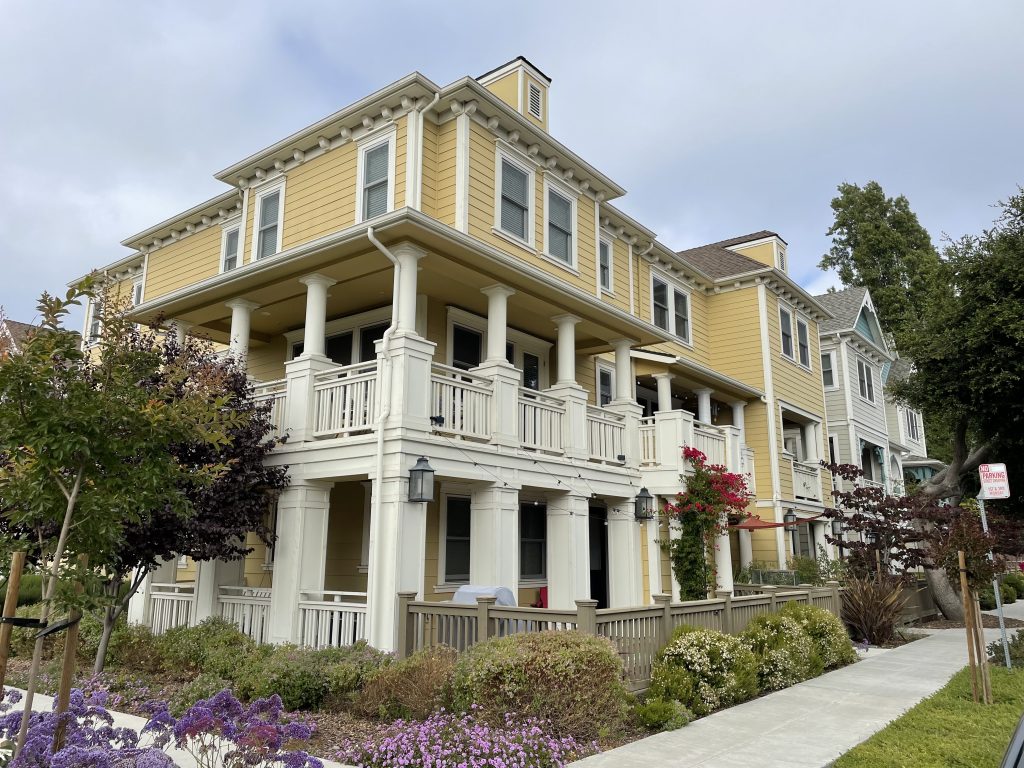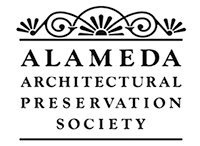
In with the Old, In with the New–Mulberry
Story by Devon Westerholm
Award Recipients: Alameda Collection Community Corporation; Hunt Hale Jones Architects, Architect; City Ventures, Builder; RW Stover & Associates, Inc., Landscape Architect.
This year AAPS has added some new categories to our Preservation Awards. One of these is
‘New Construction’. This award honors new construction or “infill” projects, as well as detached ADUs, within older neighborhoods that mirror or enhance the surrounding built environment. Including single family homes, duplexes and/or multiple unit buildings.
Growth is an inevitable part of living in one of the most desirable areas of the United States. Cities can grow in an unstructured, chaotic way that detracts from quality of life, or conversely, focus on smart growth that adds to the community. In 2014 City Ventures developers acquired the land between Eagle Ave. and Willow to build multi-family housing. Architect Dan Hale of Hunt Hale Jones Architects joined the project once it got moving. Dan and the team worked closely with the city of Alameda on the standard decisions such as size, height, and open space. They also met with members of the community twice to collect feedback – knowing that early engagement with the neighbors would not just be key to smoother relations; but would result in a better project. To honor the architecture of the area, the project has three distinct architectural styles – Bungalow, Victorian and Mediterranean.
The initial design for the development was not historically influenced. However, in meeting with the community, neighbors were passionate about the historical nature of the area and keeping that consistent with the other homes which have been there for over 100 years. Dan spent time walking the neighborhood to get a sense of the feel and styles already present as well as the colors used. This led to a major re-work of the design. Working with the city and the community; the side facing Willow reflected the bungalows in the area and incorporated a simple design with the 2 story buildings. There is another section with a Mediterranean look that employs stucco, tile roofs and wrought iron railings. My personal favorite was used for the 3-story buildings which overlook the Alameda High School football field, which has Victorian references. These townhomes offer large porches, curved openings, corbels, and wide trim work. Porches have thick columns and even the railing design references the shorter railings common on Victorians with an open area above the main spindles in order to meet current building codes. Many porches feature turned wood and other detailing common of the era.

The new development included open space and originally was going to be in the back where it would be private for the new homes. Feedback from the neighbors led to its placement at Eagle Avenue which makes it feel like a neighborhood pocket-park and is available for use. Walking through the neighborhood, everything blends together between the old and new.
The project once approved in late 2015 took around 2 years to build. The homes were for purchase. The city of Alameda was a great partner and really enforced quality which led to significant upgrades in windows to match with the historical architecture. The homes near the playfield also had upgraded doors to help with noise control.
As Alamedans know, the State of California has mandated over 5,000 new units to be built over the next eight years in Alameda. There are a lot of new developments coming which is why we want to honor this project. It was very successful due to its effort to blend into the existing neighborhood and maintain the historical nature of Alameda. The team took pains to really reference and reinforce the existing styles with a focus on livability and maintenance considerations. The fact that this project started without historical references and ended up so seamlessly blending into the surrounding blocks shows the enormous impact that community feedback can have! Well done to those working on the project and thank you to the neighbors that were committed to partnering with the development team.
